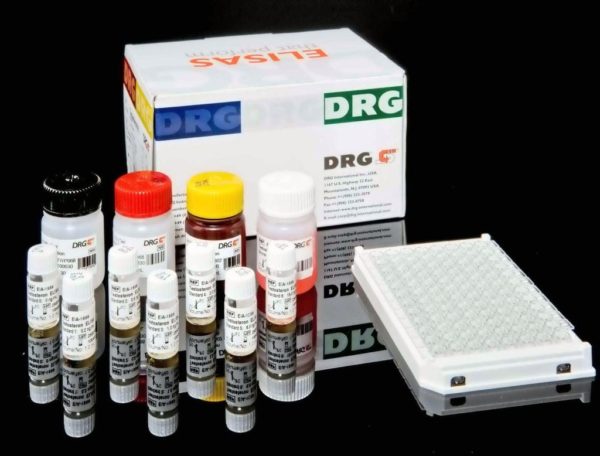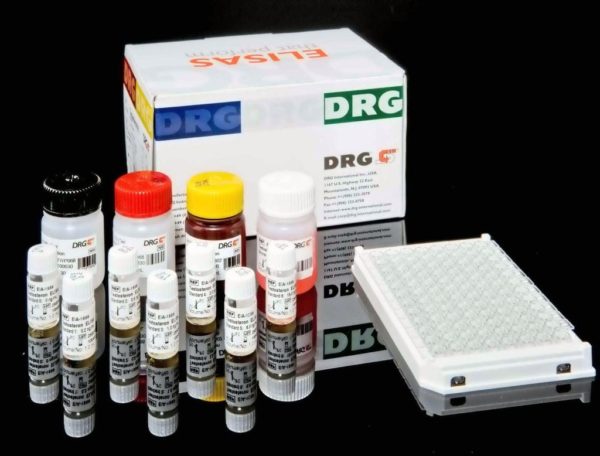Description
The DRG¨ HCG One-Step Pregnancy Test is an in vitro diagnostic test for the qualitative detection of human Chorionic Gonadotropin (hCG) in urine. The test is a two-site immunoassay employing monoclonal and polyclonal antibodies and is designed to reliably produce a visually detectable pink to purple test line in the presence of hCG at a concentration of 25 mIU/mL or greater (WHO 1st IRP, 75/537) within five minutes of sample application.
Human Chorionic Gonadotropin (hCG) is a glycoprotein hormone secreted by the developing placenta shortly after fertilization. In a normal pregnancy, hCG can be detected in serum as early as 7 days following conception1-4, doubling every 1.3 to 2 days. At the time of the first missed menstrual period, hCG concentration is about 100 mIU/mL, and peak levels of 100,000 to 200,000 mIU/mL are seen at the end of the first trimester. The appearance of HCG soon after conception and its subsequent rise in concentration during early gestational growth make it an excellent marker for the early detection of pregnancy. Elevated serum HCG levels comparable to those observed in early pregnancy may also be associated with trophoblastic or non trophoblastic neoplasms6-7 such as hydatidiform mole and choriocarcinoma, therefor, the possibility of such diseases should be ruled out before a positive HCG result is considered diagnostic for pregnancy. The DRG¨ HCG One-Step Pregnancy Test is a rapid, visual, and easily read test to qualitatively detect the presence of HCG in urine specimens at concentrations as low as 25 mIU/mL. The immunological specificity of the test kit virtually eliminates cross-reactivity interference from the structurally related glycoprotein hormones hFSH, hLH, and hTSH at physiological levels.
The DRG¨ HCG One-Step Pregnancy Test employs the basic immunochemical sandwich assay principle, relying on the recognition and formation of specific antibody / hCG / antibody complexes. The membrane is coated with goat anti-hCG on the Test Band region and goat anti-mouse on the Control Band region. During the test, urine is allowed to react with colored conjugate (mouse anti-hCG monoclonal antibody – colloidal gold conjugate), which is pre-dried on the test strip. As urine migrates across the membrane, it carries the colored conjugate with it. If hCG is present, a specific antibody / hCG / colored antibody complex is formed on the membrane. The absence of this colored band suggests a negative result. To serve as a procedural control, a colored band will always appear in the Control Region regardless of the presence of hCG in the test specimen.To perform the test, urine is added to the device with the aid of a plastic transfer pipette. The sample migrates by capillary action from the sample pad through the label pad to the membrane test area. As stated previously, if hCG is present in the urine sample, a specific antibody / hCG /
colored antibody complex is formed. The test result is read within 5 minutes. The presence of two color bands within the test region of the device indicates a positive result.




